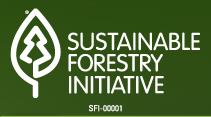When I last wrote in this space about the SFI 5-year standard review process I promised to provide my own  commentary on the posted draft standards here. My intentions were good, but business has been brisk over the last month and the needs and interests of my clients (along with the need to run a profitable business) have had to take precedence. I have managed to eke out some spare time to make some notes and just this morning, completed a summary of comments on Section 2, which you can read for yourself by clicking here ( SFIS.14-19 Section 2 commentary MW 2.25.14) .
commentary on the posted draft standards here. My intentions were good, but business has been brisk over the last month and the needs and interests of my clients (along with the need to run a profitable business) have had to take precedence. I have managed to eke out some spare time to make some notes and just this morning, completed a summary of comments on Section 2, which you can read for yourself by clicking here ( SFIS.14-19 Section 2 commentary MW 2.25.14) .
Section 2 is often referred to as the “main” part of the SFI program. It includes the requirements for certified companies (called Program Participants in the standard) who own and manage land. These are found in Objectives 1-8 and are roughly comparable to the FSC Forest Management (FM) standards. It also includes Objectives 9-14 which apply to primary sourcing companies who procure timber directly from forests, but do not themselves own land. And there are requires in Objectives 15-21 which apply to both of these kind of companies. Section 2 does not apply to the large majority of certified companies who operate downstream from primary production and participate in the Chain of Custody market.
What’s new in SFI Section 2:
The short answer is, not much. SFI has left the core elements of their standard largely intact. This is – in my view – generally a good thing. The basic structure of the Forest Management (FM) Objectives 1-8 have proven fairly effective in practice. Auditors and their clients generally understand them clearly and their implementation can be said to encourage (if not require) meaningful improvements in on-the-ground practices. The basic structure of procurement system certification – a unique feature of the SFI program – remains intact, as does the general management system requirements that support both programs.
Some things that still need work:
I am disappointed to see that SFI staff have failed to clean up a number examples where the standard uses language that is frustratingly vague and indistinct. Here are a few examples:
Indicator 2.2.5 says, “Use of integrated pest management where feasible“. Integrated Pest Management (IPM) is defined as “…the planned use of a variety of …tactics and strategies that are ecologically and economically efficient and socially acceptable”. How could this not be feasible? Does the standard intend to allow socially unacceptable tactics or ecologically inefficient strategies? I don’t think so.
Indicator 4.1.4 requires that “Certified Program Participants are knowledgeable about credible …planning and priority-setting efforts…” What the heck does that mean? Are auditors expected to conduct a quiz? Is it acceptable to not be knowledgeable if the planning efforts are not credible? How would you know? This kind of indicator doesn’t belong in a 3rd party certification standard for the simple reason that a certified company can’t tell what is expected of them, and an auditor can’t verify that they are conforming.
Indicator 8.3.1 is a new indicator which tackles the challenging subject of Indigenous People’s rights associated with private land. Unfortunately, the indicator language is just awful. The indicator requires that a certified company “Acknowledge an awareness of traditional forest-related knowledge…” I don’t want to discount the touchiness of this subject, but hopefully we can do better than this. Imagine designing a protocol to objectively verify whether an awareness has been effectively acknowledged.
A specific role for the SIC’s
The SFI Implementation Committee’s (SIC) established by the SFI program at the state and provincial level represent a key strength of the SFI program that has no counterpart in other certification programs. The SFI standard – in Indicator 18.1.1 – ensures the existence of these organizations by requiring all companies certified against Section 2 to provide direct support to them. This is verified annually by 3rd-party auditors. Section 2 also includes a long list of required actions which are managed primarily by the SIC’s. These are found in Performance Measures 17.2, 18.1, 18.2, & 18.3; and include education and outreach programs, stakeholder input mechanisms, regional conservation assessments, and logger training standards. These indicators occupy several pages of the current standard, and theoretically are the responsibility of individual Program Participants. In practice, however, they are handled collectively by the SIC. I think the standard would be improved, simplified, and clarified be removing (or perhaps moving) these indicators. Perhaps a mechanism for verifying SIC conformance could be considered. Certified companies would still be responsible for SIC support (via 18.1.1) but auditors would be spared the need to verify the same program details, over and over, with the same result.
More to come
I am looking forward to attending a public meeting scheduled for this Thursday in Portland, Maine. I hope to see friends and colleagues there, and to engage in a productive discussion of this important topic.
I will also be preparing similar commentary on the new draft updates to the SFI Chain of Custody standard (Section 3) and the SFI Certified Sourcing system (Section 4). I will post them here, with a summary of my impressions, in the next week or so.
Please let me know what you thing of all this, and find a way to provide SFI with your own perspectives on the standard updates.